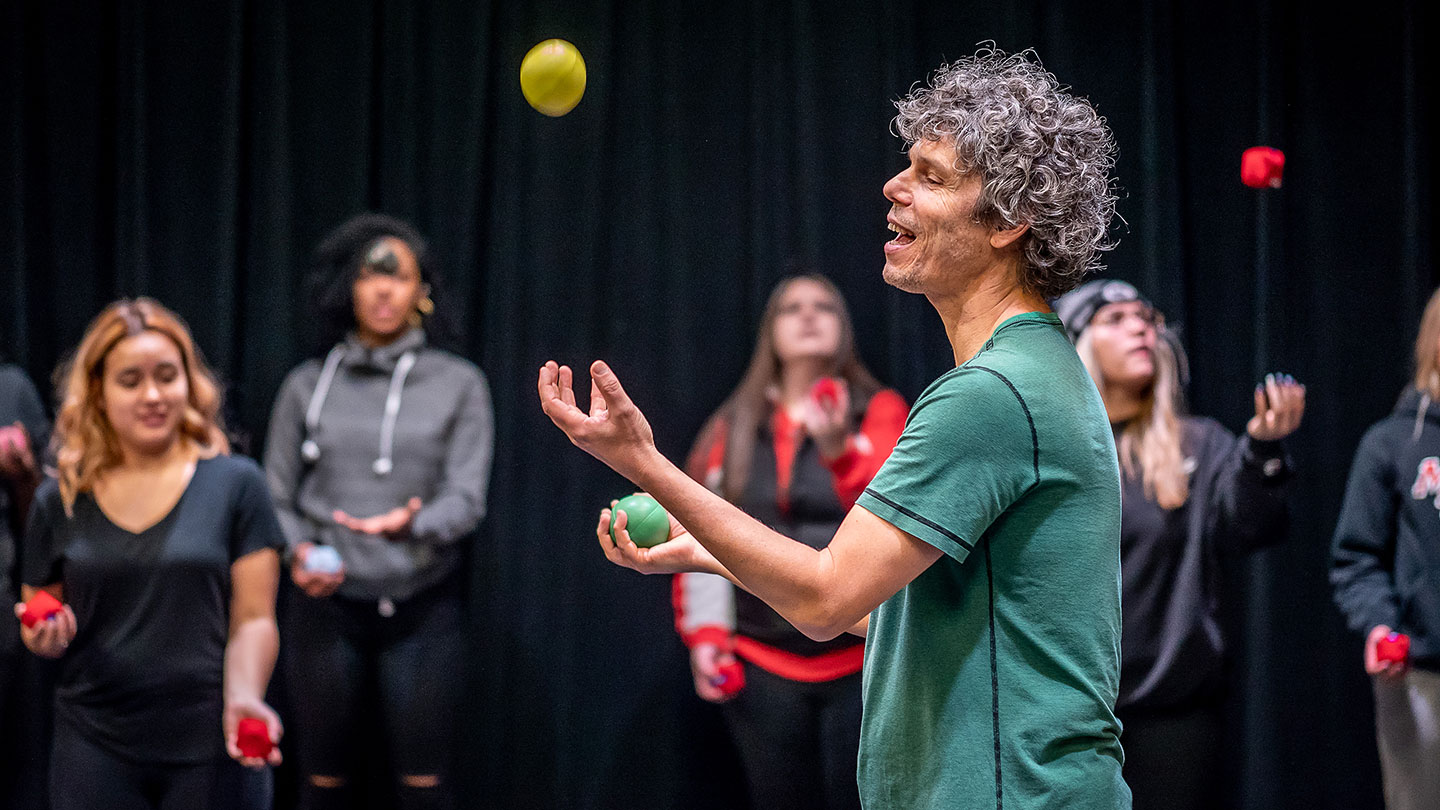
Math in The A i R
Juggling = creative collaboration of art + science
World-renowned juggler Sean Gandini teaches Montclair State students the art – and math – of juggling.
What’s the probability of finding math and science on the performance stage at Montclair State University?
It’s actually quite high.
In a duet between academia and Arts and Cultural Programming’s Peak Performances, geometry and patterns have been tossed around in a creative equation connecting mathematics, physics, the arts and juggling – the collaboration highlighted in December by the avant-garde performance of Smashed by Gandini Juggling.
If the intersection of art and science on the Alexander Kasser Theater stage was unexpected, an exhibit by general mathematics students made clear the many ways they overlap. Pre-performance exhibits featured student work on the connections discovered between math and history, psychology, exercise science, poetry and music. A discussion with juggler and artistic director Sean Gandini and University professors showcased the play and creativity in the sciences.

That’s the goal of Creativity in Mathematics professors Mika Munakata and Ashuwin Vaidya. With funding from the National Science Foundation, they have introduced innovative teaching that engages students with imaginative curricula.
The work has benefited from a partnership with Peak Performances, which brings professional music, theater and dance to Montclair State, and its artistic director Jedediah Wheeler. With the American premiere of Smashed on the schedule, creating a general mathematics unit on juggling presented an off-beat opportunity.
“We did a lot of homework,” Munakata says. “The research on mathematics and juggling actually goes deep. Of course, juggling becomes really complicated very fast, but there are researchers who study number patterns, geometric patterns, different notations for juggling. Just the fact that juggling could be represented through mathematical notation, that was enough to get us thinking about what we could do with the students.”
Gandini, the world-renowned juggler, was supportive of the University’s efforts. He has described juggling as “doing math in the air,” and lent his talents in guiding the professors as they developed lesson plans and spent time with the students as his troupe prepared for Peak Performances.
“I think for me, the most interesting thing was the connections the students made in terms of understanding how the patterns and the rhythms and juggling itself impact brain scans,” says doctoral student Ceire Monahan, who taught the class Contemporary Applied Math for Everyone.

Students who once found math and science – and juggling – intimidating are no longer shying away from it. “Everything that we learned was able to be applied to real-life situations,” says Danielle Vacca, a sophomore television and digital media major. “For example, juggling, order of magnitude problems, architecture analysis, the mathematics of toys and even having book club discussions based on mathematical novels. I was challenged to see how math is prevalent in nearly all those scenarios.”
For audiences at Peak Performances, the students showed off their newfound juggling skills and exhibited an interactive virtual reality system to track participants’ juggling movements.
“Juggling is all about rhythm and it’s all about beats,” says Vaidya. “You can understand it from a physics point of view, a mathematical point of view fairly easily. The trouble is, of course, doing it.”